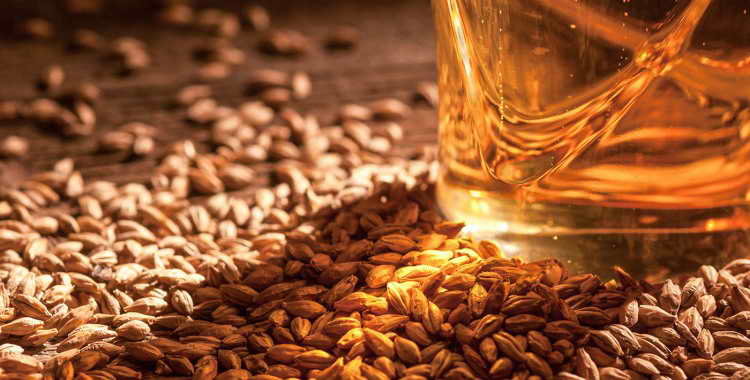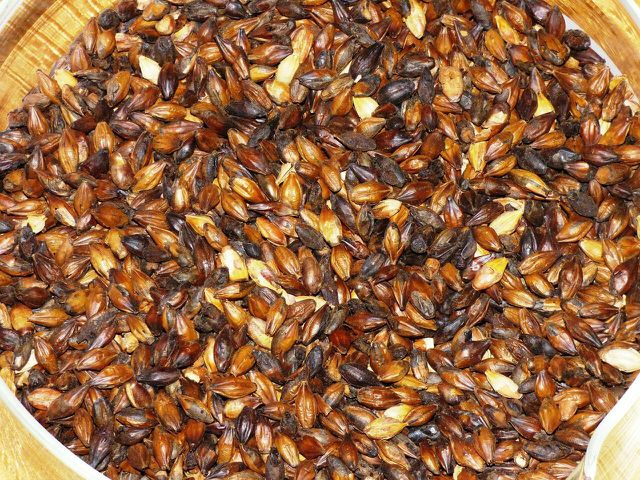Baking malt is a leavening agent that improves the texture and flavor of homemade bread. If you have a little time, you can easily make baking malt yourself – we’ll explain how it works.
Baked malt is made from sprouted grains that you dry in the oven, roast, and then finely grind. Baking malt fulfills two main tasks when baking bread: On the one hand, it refines the taste of the bread and also gives it a stronger colour. On the other hand, it can ensure that the dough rises better. This works especially well with wheat dough.
This is because the enzymes in the sprouted grains remain active when you dry them at low temperatures. Together with the yeast, they ensure that the bread rises particularly well. However, baking malt is not the only leavening agent – it only supports the function of the yeast. Recipes with baking malt therefore usually also contain yeast. You don’t have to change the amount of yeast if you also use baking malt.

Baking malt can be bought ready-made, but you can also easily make it yourself. All you need is grains, water and a few days of patience – because depending on the type of grain, it takes a while for the grains to germinate.
Important: Always use untreated organic grain if you make baking malt yourself. On the one hand, you support sustainable agriculture that works without synthetic pesticides. On the other hand, conventionally processed cereal grains are often not germinable because they are usually dried at high temperatures. Your enzymes can then no longer be activated.
Make baking malt yourself: This is how it works
Ingredients:
200 gorganic cereal grains (e.g. wheat or spelt)
water
Directions:
Place the grains in a sieve. Place the sieve in a bowl and fill it with enough water to cover the grains by about an inch or two. Leave them like that for twelve hours.
Remove the strainer from the bowl and drain the water. Dry the bowl. Rinse the grains in the sieve well under fresh cold water and then put the sieve back into the dry bowl. Important: The bowl should get light during this step, but if possible not stand directly in a sunny place.
Let the grains sit, this time for about two to three days. Rinse again under cold water every 12 hours.
After some time, the grains will begin to germinate. You can tell by the fact that thin white shoots sprout at the ends, which gradually intertwine. Wait for them to grow long enough to branch and form a braid. Then you can move on to drying the kernels. How long the grains need to germinate varies depending on the type of grain. With spelled, for example, it usually takes longer than with wheat. Important: If the shoots turn green, the grains are no longer edible. It is therefore important to wait for the right moment.
Line a baking tray with baking paper (or an ecological baking paper substitute). Spread the grains out on the baking tray and let them dry in the oven at 70 degrees top/bottom heat for about an hour. It is best to clamp a wooden spoon in the oven door so that it remains open a crack and the moisture can escape better.
After the drying process, you can roast the grains. Increase the temperature to 170 degrees top/bottom heat and leave the grains in the oven for another 40 minutes. You can then do a taste test: if the grain already tastes slightly malty, it’s ready. Otherwise, roast the grains again for 10 minutes.
When the kernels are done, remove the tray from the oven and let them cool completely. Then check if the grains are really completely dried. They must no longer contain any moisture.
Once they have cooled, you can grind the grains. It is best to use a grain mill or coffee grinder for this. Alternatively, you can also put them in the blender.
Fill the ground baking malt into a clean screw-top jar and close it tightly.
Baking malt: tips for use

The baking malt will keep for several months in a screw-top jar. It is important that the glass is sterile. You can find tips for this here: Sterilizing glasses: The best methods with step-by-step instructions.
When baking bread, it is sufficient to use about 30 grams of baking malt per kilogram of flour, unless the recipe specifies otherwise. Simply mix the baking malt into the remaining ingredients before kneading them into a dough and follow the further instructions.
Tip: If you don’t have baking malt at hand, you can replace it with malt coffee if necessary. It is then sufficient to use about a fifth of the recommended amount of baking malt – for example six grams instead of 30 grams.
